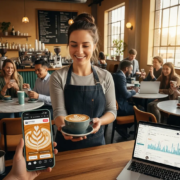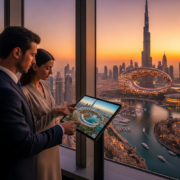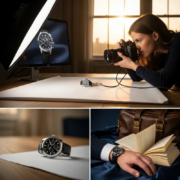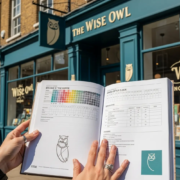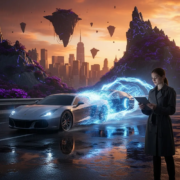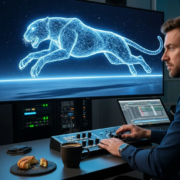How to Grow Your Brand with Social Media Marketing
How to Grow Your Brand with Social Media Marketing
Remember when brands could thrive with just a catchy jingle and a billboard? Those days are gone. Today, your audience lives on social platforms – scrolling, liking, and sharing their way through digital communities. Miss this space, and you become invisible. But get it right? Social media becomes your ultimate brand amplifier. This comprehensive guide walks you through actionable strategies on exactly how to grow your brand with social media marketing – no fluff, just real-world methods that convert strangers into loyal fans.
The Undeniable Power of Social Media Marketing
Think of social platforms as the world’s largest networking event running 24/7. Over 4.9 billion people actively use social media globally. For perspective: That’s nearly 62% of humanity scrolling through feeds daily. Consider the local coffee shop “Brew Haven” – a small business that doubled its customer base purely through clever Instagram Reels showing latte art tutorials and behind-the-scenes humor. Their secret? Treating social media as a conversation hub, not a megaphone.
Organic reach may have declined on some platforms, but engagement opportunities exploded. LinkedIn discussions build industry authority. TikTok challenges create viral sensations. Pinterest boards drive discovery. Instagram Stories build intimacy. Platforms have become nuanced ecosystems where strategic content consistently outperforms interruptive advertising. The advantage? Lower customer acquisition costs compared to traditional advertising when done authentically. Where else can you directly connect with ideal customers for minimal investment?
Beyond Vanity Metrics: What Real Growth Looks Like
Let’s be honest – 10,000 followers mean nothing if they don’t engage. True growth on social media manifests through tangible results: rising website traffic from platform referrals, increased qualified leads filling your contact forms, higher conversion rates from social-sourced customers, and genuine community advocacy. Tools like Google Analytics and platform insights reveal what content drives meaningful actions, helping you shift focus from likes to leads.
Crafting Your Unforgettable Social Strategy
Jumping in without a plan is like sailing without a compass. Your social media strategy needs clear coordinates. Carefully define what you aim to accomplish with thoughtful objectives: Are you launching a product? Building brand recognition? Driving event registrations? Establish SMART goals (Specific, Measurable, Achievable, Relevant, Time-bound). For example, “Increase Instagram-driven website visits by 30% within Q3” or “Generate 50 qualified leads via LinkedIn monthly.”
Knowing Your Audience Inside Out
Who exactly are you speaking to? Assume nothing. Fashion brand RenewStyle initially targeted millennials but uncovered through Facebook analytics their biggest spenders were actually Gen X professionals. They pivoted content to showcase office-to-evening versatility, resulting in a 40% sales uptick. Develop detailed audience personas: What keeps them up at night? Which platforms do they prefer? What content formats do they consume during commutes? Tools like audience insights and social listening APIs offer invaluable data.
Choosing Platforms Like a Pro
Spreading yourself thin across every platform guarantees burnout. Select where your audience actually spends meaningful time and what content style aligns with your brand voice. Here’s a quick cheat-sheet:
Platform Purpose and Content Fit
Instagram & Pinterest: Highly visual brands, aesthetics matter. Ideal for fashion, food, design. LinkedIn: Perfect for B2B, thought leadership, and professional networking. TikTok & YouTube Shorts: Unmatched for viral reach and trend engagement with Gen Z/Millennial audiences. Facebook: Broad demographic targeting, excels with community groups and local business. Twitter (X): Breaking news, customer service, and real-time industry conversation. Start with 2-3 platforms and master them rather than posting everywhere without impact.
Content: The Heartbeat of Social Growth
Great content stops the scroll. It educates, entertains, or evokes emotion – preferably all three. Imagine Gourmet Gardens, an organic snack company. Instead of just posting product photos, they created humorous “Snack Fails” videos (entertaining), infographics about sustainable farming (educational), and heartwarming stories of farm families (emotional). Engagement soared because they gave value beyond sales pitches. Do you offer recipes, troubleshooting guides, storytelling, or industry insights?
Embrace Diverse Content Formats
Repurposing one blog post as ten different social assets multiplies your reach. Transform key ideas into:
Format Arsenal for Maximum Reach
Short-form Video: Reels, TikTok clips, YouTube Shorts capture fleeting attention spans. Live Streams: Q&As, behind-the-scenes tours, or product launches build immediacy. Infographics: Visually summarize complex data for LinkedIn or Pinterest. User-Generated Content (UGC): Share fans’ photos/reviews – social proof is gold. Interactive Content: Polls, quizzes, “ask me anything” (AMA) sessions boost active engagement. Stories and Fleets: Offer time-sensitive, casual glimpses into your world – perfect for FOMO.
The Rhythm and Flow: Content Calendars
Consistency matters more than going viral once. A structured calendar prevents aimless posting. Plan weekly themes around seasons, promotions, and industry events. Schedule core posts with tools like Later or Buffer, but leave room for spontaneous commentary on current events when appropriate. Analysis tools often reveal best posting times – typically commutes and lunch breaks – but test what works uniquely for your crowd.
Building Relationships, Not Just Followers
Social media at its best is a dialogue. View comments as golden opportunities, not chores. Fashion brand Zest noticed a flood of questions about styling certain jackets. They hosted a live styling session that directly addressed these queries, converting viewers into customers. Respond personally to queries and feedback within 24 hours. Use polls asking for opinions on product ideas, share fan content enthusiastically, and occasionally ditch the brand voice to show the humans behind the logo.
Turn Followers into Advocates
Encourage customers to become your storytellers. Create branded hashtags for events or challenges. Run contests requiring participants to share their experiences. Feature UGC prominently on your feed. For instance, travel agency Wanderlust Tribe’s “Hometown Adventures” campaign where users shared local hidden gems saw 200+ entries – free authentic marketing demonstrating community trust better than any ad.
Collaborate to Expand Reach
Partnering with aligned influencers, even smaller micro-influencers (often more affordable and engaging), immediately unlocks new audiences. Coffee roaster Bean Brilliance collaborated with bookstagrammers, pairing blends with reading recommendations – perfect synergy reaching avid readers who loved cozy beverages. Cross-promoting with non-competing complementary businesses – say, a yoga mat brand alongside meditation coaches – exponentially widens organic visibility.
Measuring Success: Beyond Likes
What good are 50 retweets if they don’t serve your strategy? Track metrics aligned with your initial objectives:
Growth Metrics That Actually Matter
Engagement Rate: (Likes + Comments + Shares) / Followers x 100 – measures interaction quality. Click-Through Rate (CTR): Percentage clicking links to your site – signals captivating calls-to-action. Conversion Rate: Visitors from social completing desired actions (sales, sign-ups, downloads). Brand Sentiment: Qualitative analysis of comments/messages – is perception positive? Share of Voice: Your brand mentions versus competitors. Customer Lifetime Value (CLV): Revenue generated from social-acquired customers over time.
Dive into native analytics weekly. Notice patterns: Which topics trigger shares? What format prompts DMs? Platform tools offer crucial insights without extra cost. Notice Fitness Gear Co. spotted 70% higher CTR on LinkedIn tutorial videos versus Pinterest infographics? They doubled down on LinkedIn. Be nimble. Let data – not guesses – guide content investments.
Fixing Common Social Media Blunders
Even great strategies stumble on pitfalls. Avoid these based on brand crisis lessons:
Ghosting Your Audience: Inconsistent posting erases you from memory – maintain cadence. Over-Promoting: Constant sales pitches feel spammy – apply the 80/20 rule (80% value, 20% promotion). Ignoring Negative Feedback: Deleting complaints inflames anger – address criticism publicly then take it offline swiftly. Chasing Vanity Metrics: Buying followers tanks credibility and engagement rates – slow organic growth wins. Posting Without Strategy: Random content wastes resources – tie every post to an objective. Remember, authenticity – even admitting mistakes – builds trust compared to overly polished insincerity.
Knowing When to Bring In Experts
Feeling overwhelmed piecing together strategy, content calendars, analytics, and community engagement? It’s okay. Many thriving brands partner with specialized agencies to accelerate impact. For example, Outsider Outdoor Gear saw plateauing Instagram reach despite consistent efforts. After seeking professional help, they implemented a refined UGC strategy and tailored video series boosting monthly leads by 25%.
Professional teams bring valuable outside insights, established best practices, and tools you might lack internally. This is where a creative partner like ArtSun Studio becomes invaluable. Their expertise can streamline your creative content creation pipeline while helping you consistently execute advanced tactics for growth.
Your Social-First Growth Journey Starts Now
Mastering how to grow your brand with social media marketing isn’t about overnight virality. It demands understanding your tribe, creating irresistible content, nurturing true engagement, measuring wisely, and staying adaptable. One pivot could transform lukewarm visibility into explosive growth. When executed with purpose and patience, social platforms can become your most potent engine for brand loyalty and revenue growth. What audience need will you meet first with your next compelling post?
The path to impactful brand building requires expert strategies tailored to your unique goals. To efficiently elevate your social presence beyond competitors, leverage specialized resources. Discover how professional social media marketing services can unlock new levels of engagement or explore expert branding strategies designed for lasting impact. Analyzing campaign effectiveness can be difficult without robust tools – consider tapping into social media analytics expertise to refine your approach. Ultimately, the goal is to sustainably grow your brand with ArtSun Studio‘s integrated digital approach. Now is the moment to translate social interactions into measurable business triumphs – which insight will you implement today?

